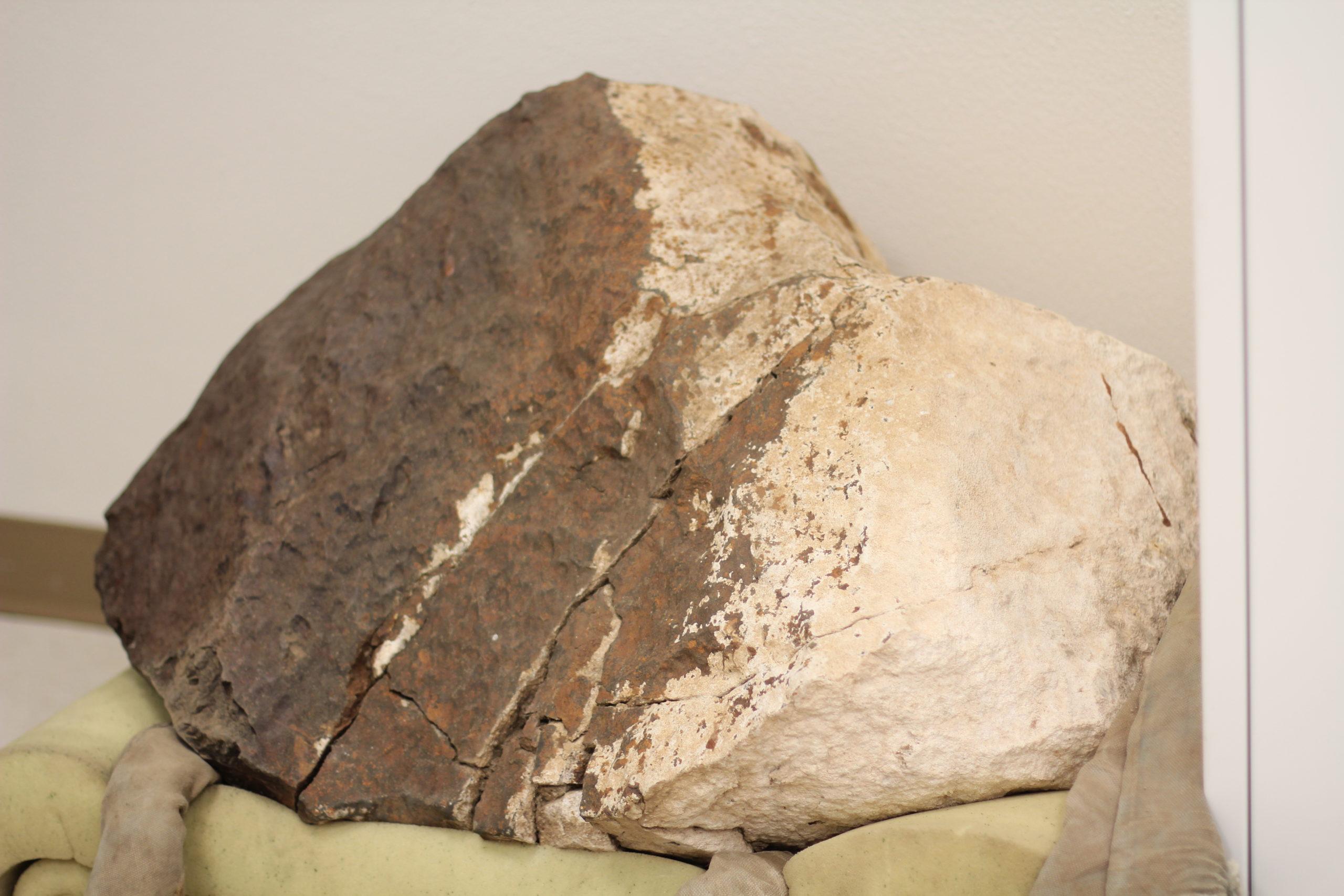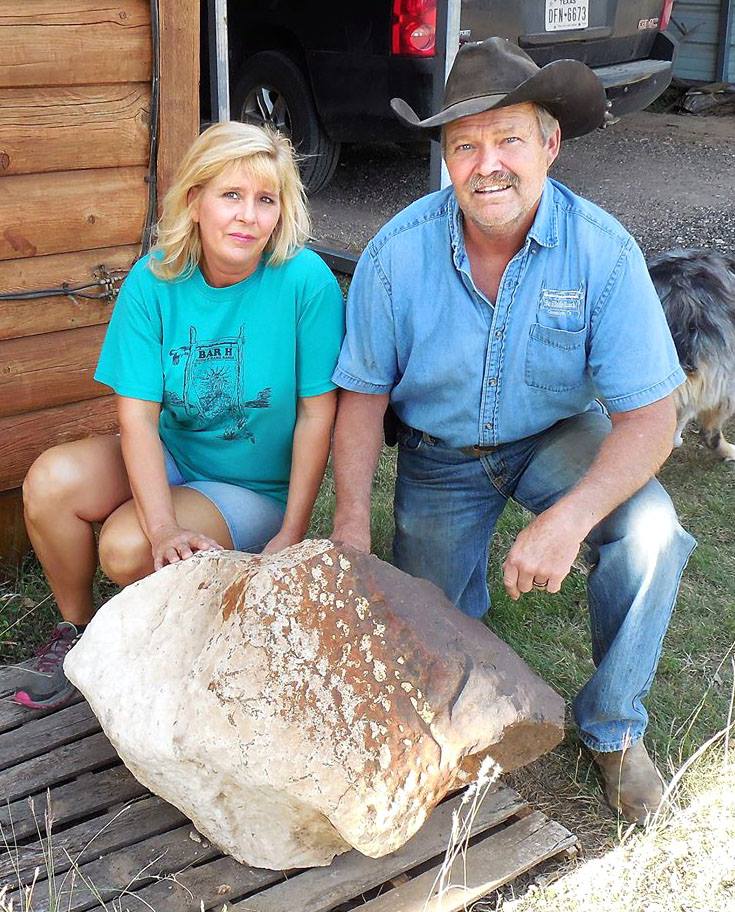
TCU is now in possession of a piece of history from far, far away.
The Monnig Meteorite Gallery in the Sid Richardson Building bought the largest chrondite meteorite ever discovered in Texas. Dr. Rhiannon Mayne, the gallery curator, said the approximately 760 pound rock traveled from the asteroid belt all the way to Clarendon, Texas, where it was found by two ranchers.
The fact that the artifact was discovered in Texas played a large part in why TCU was able to add it to its collection, according to Mayne. She said DeeDee and Frank Hommel felt strongly about their big find remaining in the state, and the gallery was ready to make the purchase.
Mayne declined to say how much money was spent on the meteorite, but did say that it was paid for with the endowment left by Oscar E. Monnig, who donated his collection to TCU between 1978 and 1986.
Monnig died in 1999, according to the gallery’s website. The new meteorite is part of his ongoing legacy.
“I kind of think that this is something Oscar really would have loved to have in the collection and so it’s great to be able to do that,” Mayne said.

She said it’ll be a great showpiece for the gallery as well as a subject for scientific research. For now, it rests in a vault where TCU 360 was able to view it.
Mayne smiled at the meteorite on the floor of the vault.
“It’s so big,” she said. “It’s interesting when you can think ‘Man, this hit the Earth, and it came from the asteroid belt.’ It’s sometimes easy to forget that context with a really small piece.”
The rock is already massive. Its total weight is still unknown as parts of it haven’t been found. Mayne said the pressure of falling through the Earth’s atmosphere caused the meteorite to break into several pieces that are still being searched for near the Clarendon crash site.
Nona Batiste, the gallery assistant and educator, said Texas is a “hotspot” for meteorite sightings. Its open spaces and little light pollution makes it much easier to spot objects falling from the sky and notice out of place rocks on the ground.
She was visibly excited when talking about the huge meteorite.
“Because of my love for rocks, when I saw it, I was ecstatic.” she said. “I got rock pimples. Instead of goose pimples, I got rock pimples. It was so exciting.”
Batiste said she appreciates the meteorite for its scientific value. The rock has traveled a great distance and picked up information along the way that scientists will try to uncover.
She does not know when the meteorite will be available to view at the Monnig Meteorite Gallery, but she did say it will be free for visitors.
In the meantime, people can keep an eye on the ground for meteorites. Mayne said to pay attention to rocks that look out of place, have a magnetic pull and are unusually heavy for their size.
If you think you’ve found a meteorite, you can contact gallery curators here.







